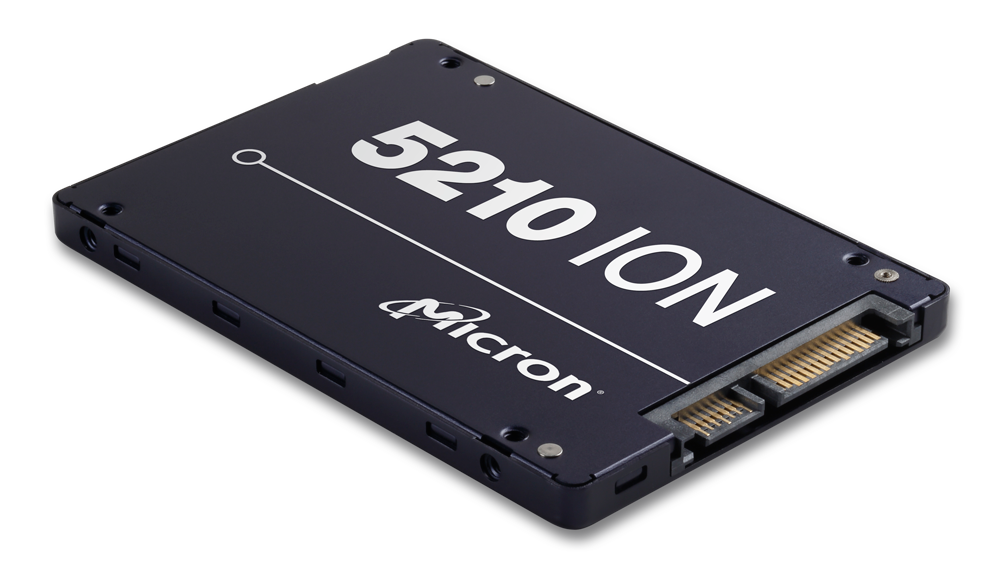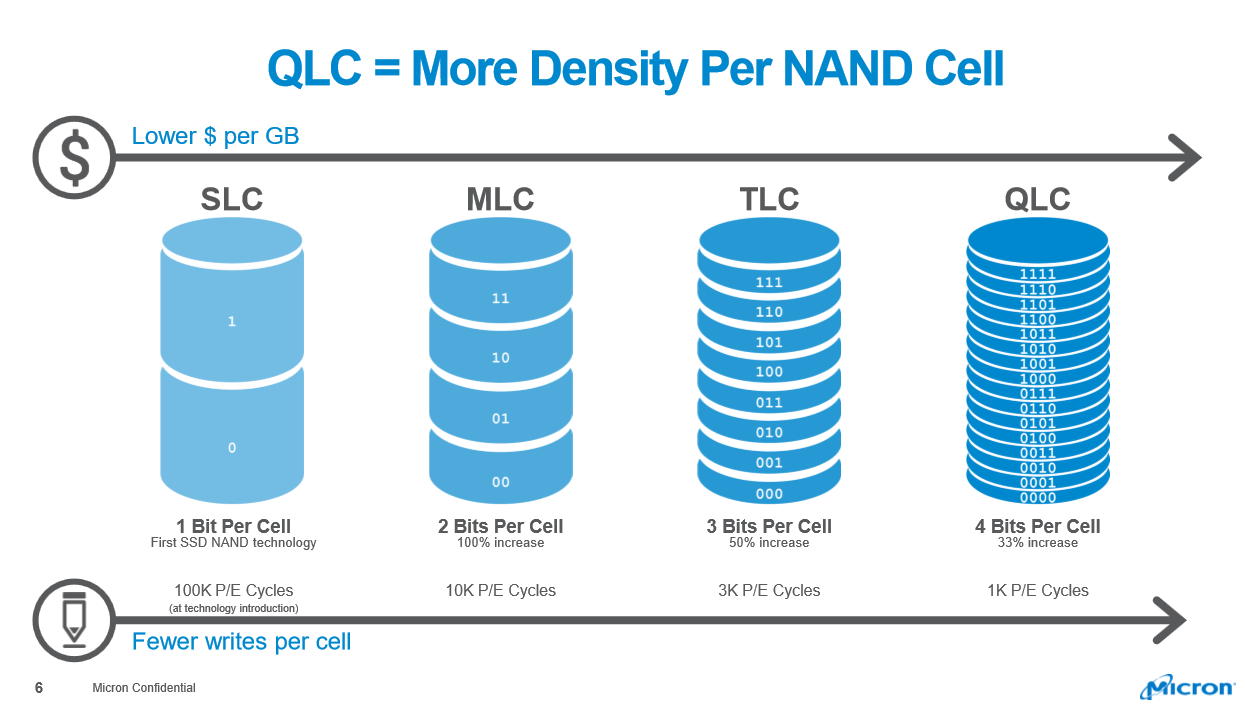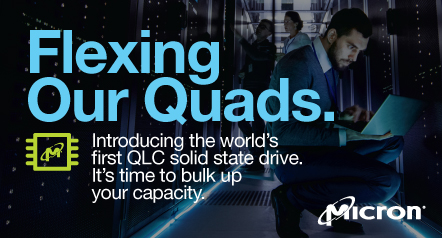Micron Announces QLC NAND SSDs Up To 7.68TB
Micron announced that it is shipping new SSDs with Quad-Level Cell (QLC) NAND. SSDs have already largely killed off high-performance 15K HDDs, but QLC flash will increase NAND storage density by 33%, which will boost SSD capacity and reduce costs even further. That means standard 3.5" HDDs are also now in the crosshairs.
Micron is currently shipping the 5210 ION SSDs to several of its strategic partners and customers. The 5210 SSDs leverage the SATA interface and come in capacities ranging from 1.92TB to 7.68TB in a slim 7mm 2.5" form factor. Micron's new SSDs are slated for a full release in fall 2018, but the leading-edge products are destined for the data center. As we often see with enterprise SSDs, we expect the new technology to filter down to desktop PCs eventually. In fact, Micron's partner Intel also announced that it is developing QLC SSDs for both consumer PCs and the data center.
SSDs based on Single-Level Cell flash debuted in 1987. SLC flash stores a single bit per NAND cell and uses two voltage states. SLC eventually gained traction in the mainstream, but it took nearly ten years of mass SSD availability before the industry moved to storing multiple bits per NAND cell. MLC flash stores two bits per cell and requires four voltage states per cell.
Storing more bits per cell increases density and reduces cost, so Triple-Level Cell (TLC) was a natural progression. TLC NAND stores three bits per cell and uses eight voltage states per cell. Now TLC flash comes in nearly every SSD, even those destined for heavy-use enterprise environments, and the advent of 3D NAND has enabled even more capabilities.
Micron 64-layer 3D QLC NAND will store four bits per cell with 16 voltage states--a feat that would be impossible with planar (2D) NAND. The extra voltage states increase stress on the NAND, which results in less endurance. It also takes longer to program 16 voltage states per cell, which results in decreased performance.
But the payoff comes in the form of Micron's 1 terabit (128GB) die density, which provides 33% more storage capacity than the company's MLC NAND die. Micron currently produces MLC NAND packages with 16 die, and a similar approach with QLC NAND could yield up to 2TB of storage in a single chip. Theoretically, QLC could enable up to a 33% reduction in cost, but Micron isn't sharing pricing information yet.


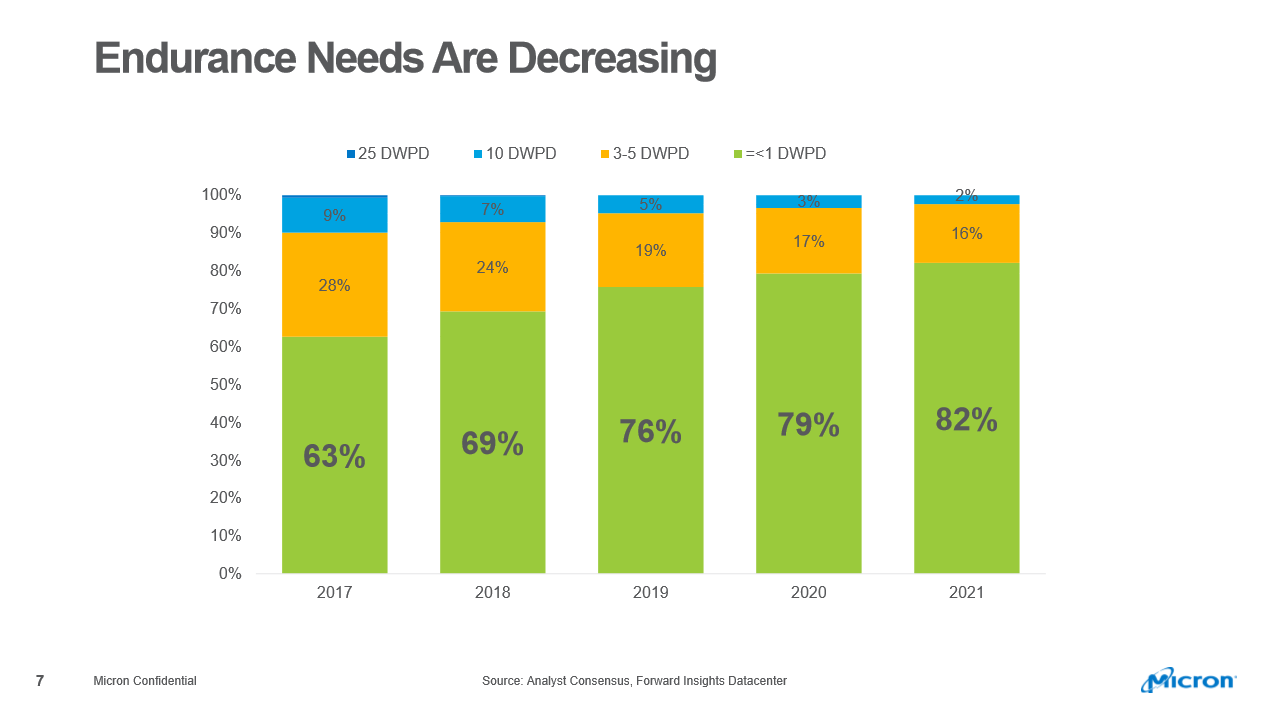
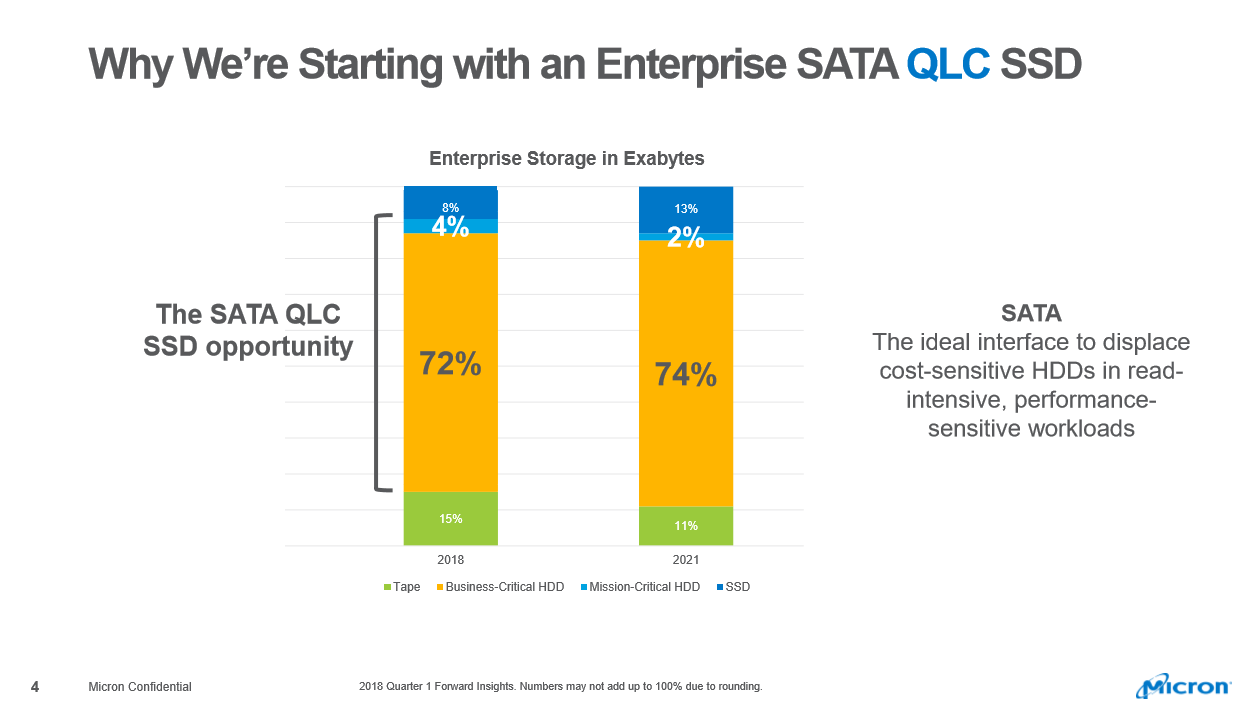
Surprisingly, Micron's QLC can withstand 1,000 (program/erase) cycles. Micron isn't sharing endurance specifications yet, but the company says the QLC SSDs will have nearly 1 DWPD (Drive Write Per Day) of endurance. The company achieved this feat with standard error correction techniques, which hints that it might be possible to extract even more endurance with stronger error correction technology. Micron also claims that the QLC SSDs adhere to JEDEC's stringent endurance requirements, which state that enterprise SSDs have to retain stored data for three months without power (after endurance has been exhausted). Micron also says that it isn't using compression technology with the new drives, which suggests the company isn't using its own internal Tidal controllers yet.
Get Tom's Hardware's best news and in-depth reviews, straight to your inbox.
Micron's ION SSD lineup also features all of the enterprise-class features of its Xtended Performance and Enhanced Reliability Technology (XPERT) suite. That includes power-loss protection, data path protection, a five-year warranty, AES 256-bit and TCG Enterprise encryption, and a device-level internal RAID implementation that helps protect user data (RAIN).
The industry has slowly transitioned to less-endurant SSDs as data centers have learned more about their endurance requirements. Today, most high-endurance enterprise SSDs feature 3-5 DWPD of endurance, but that pales in comparison to the 25 DWPD SSDs that were common just a few short years ago. QLC NAND will be used only to store infrequently-accessed WORM (Write Once Read Many) data, so endurance and performance aren't as much of a concern. These read-heavy workloads consist of AI workloads, big data applications like Hadoop HDFS, content delivery systems, and scale-out archival storage, among others. Micron shared performance results in several enterprise workloads, which we've included in the album below.


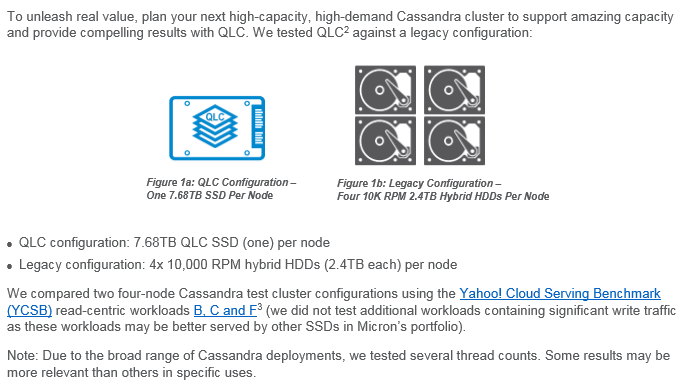
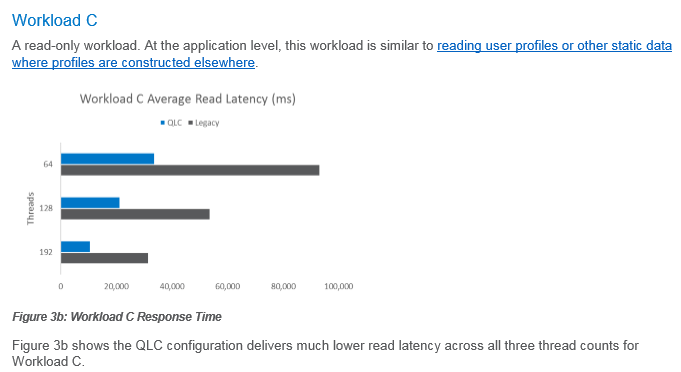

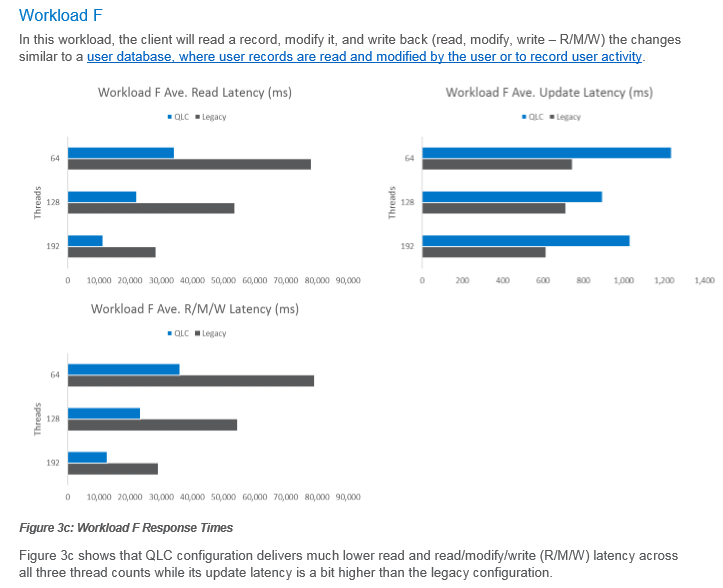

QLC SSDs will also draw considerably less power than HDDs, while still delivering more performance and capacity in a smaller space. HDDs drop into lower power states when they are idle, but each step down in the idle states results in increased response time when the drive is asked to satisfy requests. In contrast, SSDs can drop into low-power states and resume quickly when called upon. Micron claims its QLC SSDs draw 10% less power during a heavy workload than a comparable HDD array, but more importantly, they draw 3X less power during read-centric workloads.
QLC SSDs also bring all of the same density advantages over HDDs that we find with existing MLC SSDs, which already stretch up to 7.68 TB in a 7mm 2.5" form factor. In contrast, most of those SSDs use the SAS interface, while Micron's 5100 series uses the ubiquitous SATA interface. Micron says that it will develop QLC SSDs with other interfaces, too. The company doesn't develop SAS products, so we will likely see QLC SSDs paired with the NVMe interface in the near future.
Micron will share more concrete performance and endurance specifications when the drives come to the general market in the fall. Micron's first-gen QLC SSDs don't use performance-boosting features, like the emulated SLC layer we see in TLC SSDs, so it's possible the company can provide faster models for the consumer market in the future. Intel and Micron are still jointly developing NAND through their IMFT partnership, but that partnership is slated to end after the third-generation of their flash technology. Micron uses IMFT's second-gen NAND to build QLC products, and Intel plans to release data center and client (consumer) storage products based on the same QLC NAND, but it hasn't provided a release date or specifics.

Paul Alcorn is the Editor-in-Chief for Tom's Hardware US. He also writes news and reviews on CPUs, storage, and enterprise hardware.
-
thefattyzilla Now we know exactly why they just dumped a ton of their drives over the past 2 weeks. Picked up a 2TB SSD of theirs for $270 from Rakuten.Reply
https://slickdeals.net/f/11585371-2tb-micron-1100-2-5-sata-iii-solid-state-drive-269-free-shipping -
SoerenHedemand That's marketing speech. In real life, the binary ordering will be like this:Reply
0000
0001
0011
0010
0110
0111
0101
0100
1100
1101
1111
1110
1010
1011
1001
1000
The point is to only change one bit between neighboring analog levels. -
derekullo Reply20990180 said:That's marketing speech. In real life, the binary ordering will be like this:
0000
0001
0011
0010
0110
0111
0101
0100
1100
1101
1111
1110
1010
1011
1001
1000
The point is to only change one bit between neighboring analog levels.
Marketing would have put the binary in numerical order.
Or at least copy pasted it from the programmer who put it in numerical order.
-
mapesdhs "That means standard 3.5" HDDs are also now in the crosshairs. "Reply
Tech sites have been saying this sort of thing for years now. Where's the reliability data for QLC tech? What about cost? Backup? etc. It's not as if rust spinner tech is standing still, likewise LTO and other developments. -
BryanFRitt "more importantly, they draw 3X less power, during read-centric workloads", so if a comparable HDD array draws _ power, these generate 2X_ power? P-3*P=-2*P, this doesn't sound right.Reply
